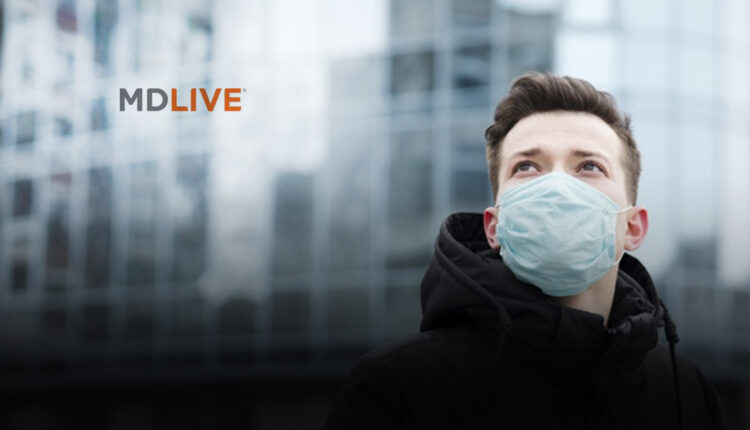Workers estimate taking a single sick day costs them hundreds of dollars in lost wages and out-of-pocket expenses
Remote workers and parents in particular worry over workload, stress over children’s schoolwork while suffering through a sick day
Following a tumultuous 2020 that altered work/life balance for tens of millions of Americans against the backdrop of the COVID pandemic, new research released today sheds light on the added stress and surprising costs for U.S. workers and their families when taking a sick day off from work.
HR Technology: MemVerge Certified As A Great Workplace

According to a new national survey “Worried Sick: U.S. Workers and the Burden of Sick Day Stress,” 42% of U.S. working adults were more stressed or anxious over the past year about taking a sick day to care for themselves or someone else than in years past; and, in a surprising finding, sick day stress was found to be substantially higher among people working remotely than those working in-person.
The survey of 2,000 U.S. workers conducted by OnePoll on behalf of MDLIVE, Inc., is the first report in 2021 to assess the emotional and financial costs associated with taking a sick day during 2020.
The research shows that, while taking a sick day was itself a source of stress and anxiety, stress and anxiety were also key reasons for needing to take time off from work. More than half of workers (55%) were more likely to take a sick day in 2020 for mental health reasons than in previous years. The survey found that proportionally more men than women cited stress and anxiety as the reason for needing to take time off from work.
“The sick day experience, meant to enable workers to set aside their worries to focus on rest and recovery from illness, has for many people morphed into full-blown stress and anxiety due to the changing dynamics and blurred lines between work, home and family,” said Dr. Cynthia Zelis, chief medical officer, MDLIVE. “We undertook this research to gain a better understanding of what stressors people deal with when having to take a sick day, and how we can help alleviate those stressors by improving access to care that is quick, convenient, cost-effective and contagion-free.”
HR Technology: Kahuna Deploys Its Professional Development Platform To Willis Towers Watson
With the pandemic causing many children to be schooled remotely, the survey finds that the single most stressful part of taking a sick day reported by workers is having to help their children with schoolwork (24%), and nearly 40% of adults worry about how their kids will be able to do their schoolwork when the parent is taking a sick day.
When it comes to their own work, more than one in five workers (22%) reported the biggest stressor is feeling compelled to keep up with their workload; not surprising, as half of all workers reported that their boss or employer expects them to continue to work to some extent even when taking a sick day.
A Hefty Price Paid for a Sick Day
When it comes to the stress on the wallet, workers estimated that taking a sick day costs them, on average, $277 in lost income and out-of-pocket expenses. Specifically, the highest average estimated sick day expense was a visit to the doctor ($63), followed by estimated lost income ($60) and estimated childcare costs ($53).
And the cost of a sick day seems to be rising: 45% of people reported that taking a sick day cost them more over the past year than in years prior to 2020.
Sick Day Stress Hits At-home Workers Hardest
The survey found that more than half (51%) of people who work entirely remotely feel more stressed or anxious about taking a sick day this year than in past years, compared to just over one-third of people who work entirely in-person; and nearly two-thirds (64%) of remote workers were more likely over the previous year to take a sick day for mental health reasons, compared to only 40% of those working in-person.
Contagion a Major Concern
As COVID rates surge, emotional strain is viewed as a secondary contagion for many workers and their families: 80% of working adults feel that stress and anxiety is contagious among family members, and 71% believe it also spreads among coworkers. About 45% of respondents said they expect their family to be more impacted by stress and anxiety this winter than traditional winter ailments.
Fear of disease contagion is also the single biggest sick day concern: 23% of workers were most concerned about infection risk from going to the doctor’s office when considering taking a sick day in 2020.
“Many U.S. workers are struggling when it comes to managing through a sick day, whether for acute illnesses or for mental health,” said Dr. Zelis. “With health plans reducing or eliminating copays for telehealth visits, and tens of millions of people now having access to virtual care services, we can help alleviate sick day stressors from cost to contagion, and ensure people get the care they need when they need it.”
Men Struggle More than Women with Sick Day Stress
According to the research, men (45%) are more stressed/anxious about taking a sick day this year over previous years than women (39%); and 59% of men were more likely to take a sick day this year due to stress and anxiety, compared to just over half of women (51%).
The most stressful part of taking a sick day for men was feeling compelled to keep up with work; the most stressful part for women was having to help their kids keep up with schoolwork. Nearly twice as many women than men felt the most stressful part of a sick day was contacting their boss or employer about needing a sick day.
HR Technology: BullseyeEngagement Appoints Raquel Furrer As Chief Customer Success Officer

